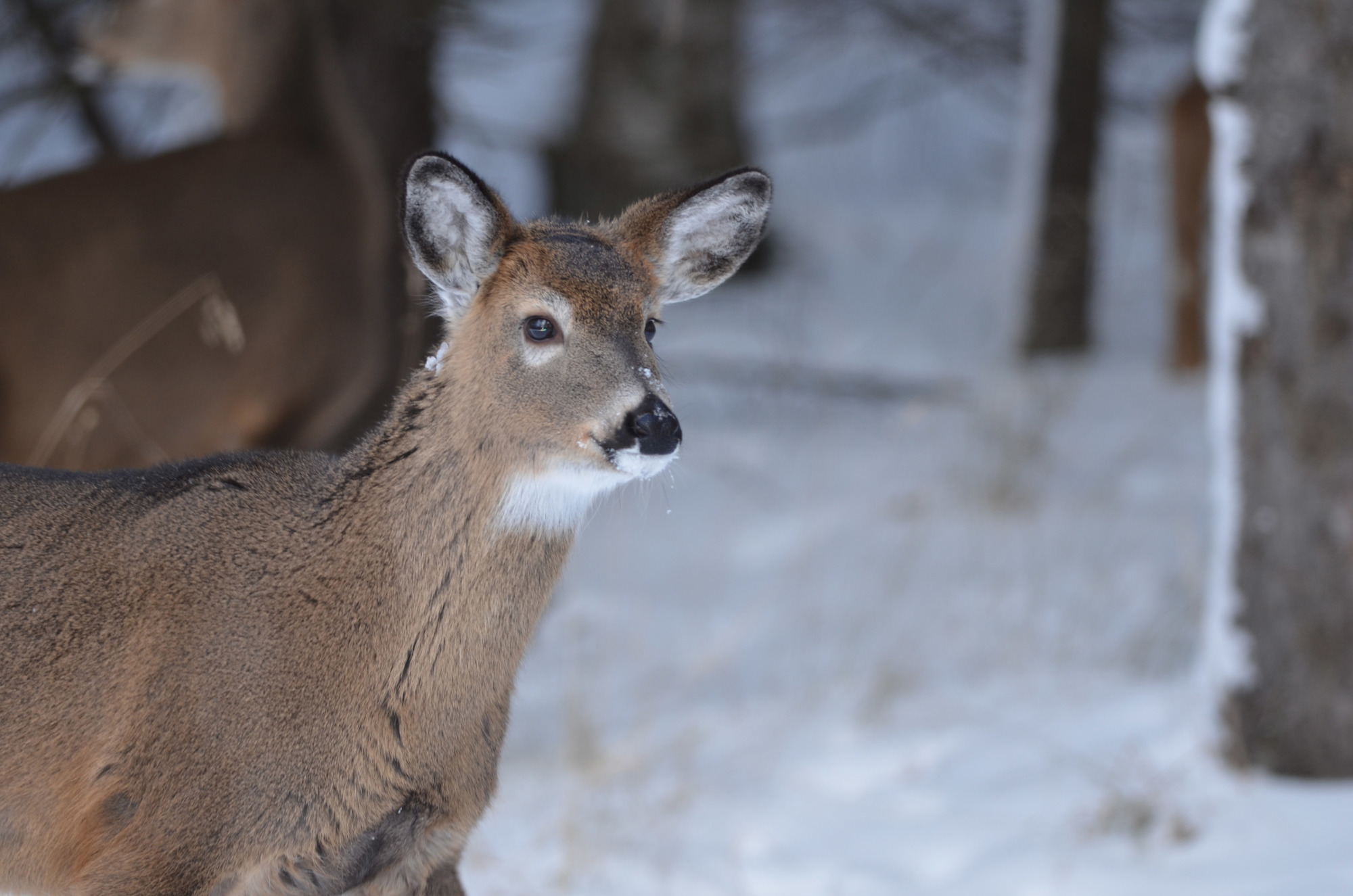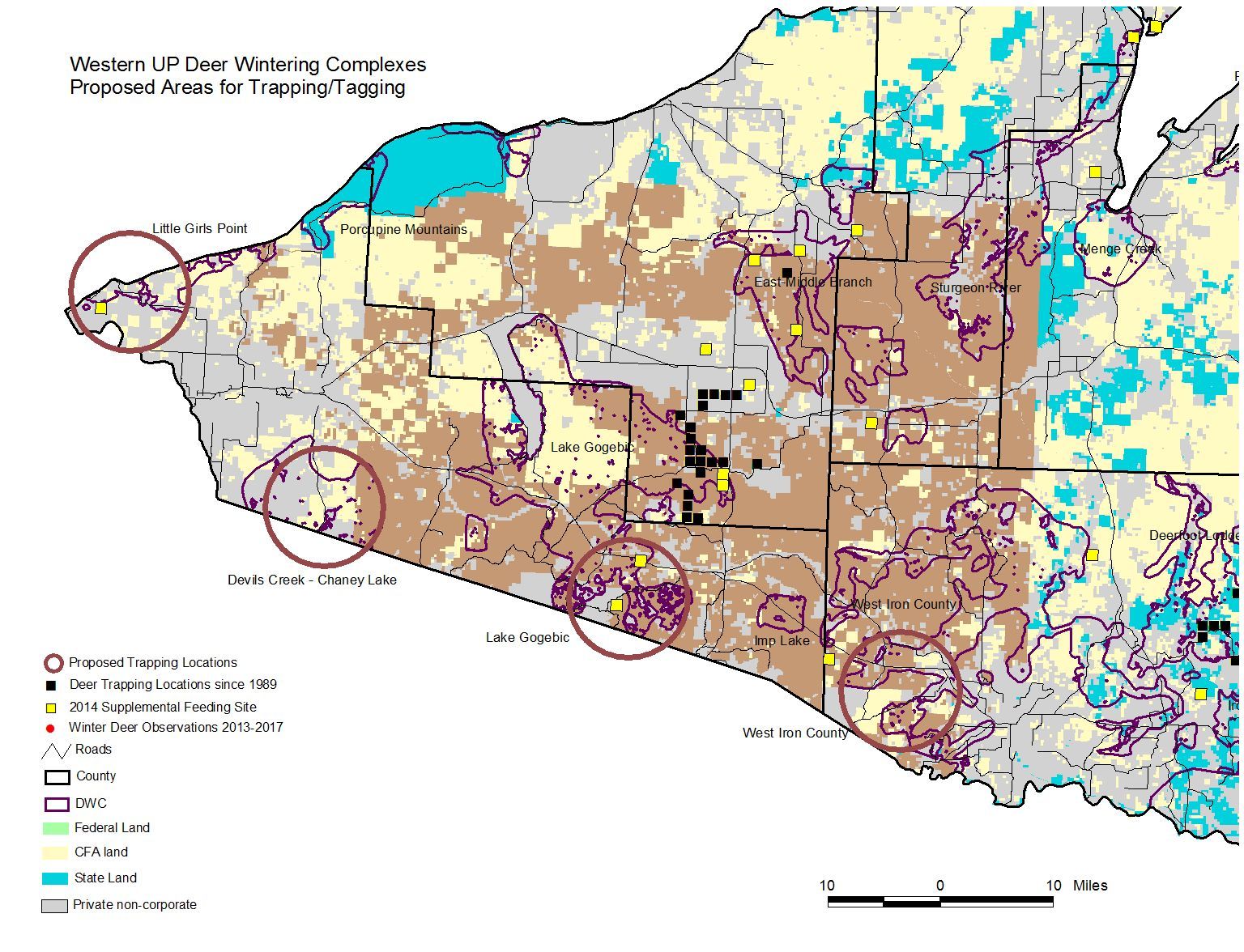The Michigan Department of Natural Resources will soon begin capturing and collaring white-tailed deer in the western Upper Peninsula as part of a multi-year study to quantify movement patterns of deer, especially migration between winter and summer ranges.
Completing the study will provide DNR wildlife managers with valuable information needed if chronic wasting disease – an incurable, always fatal disease found in deer, moose, mule deer and elk (cervids) – is detected in the U.P.

“Although CWD has not yet been documented in the Upper Peninsula, managers found infected deer in two Wisconsin captive cervid facilities within 30 miles of the Michigan border,” said Terry Minzey, DNR U.P. regional wildlife supervisor. “While it is not possible to predict if, or when, we will find CWD in the U.P., preparations seem prudent. In some instances, deer in the U.P. have been documented seasonally migrating more than 30 miles.”
Chronic wasting disease attacks the brain of infected animals, creating small lesions in the brain, which result in death. The disease is transmitted through direct animal-to-animal contact, or by contact with saliva, urine, feces, blood, carcass parts of an infected animal, or infected soil.
“Limiting the spread of CWD is difficult, but even more so here in the U.P. where winter severity results in increased deer movements and yarding behavior that concentrates animals,” Minzey said.
The disease can spread through the deer herd and, once established, could – over the long term – significantly reduce the number of deer in the region and/or significantly depress numbers of older age class deer.
There are no known health risks posed to humans by CWD, though as a precaution the U.S. Centers for Disease Control and Prevention recommends animals infected with the disease not be eaten.
A scientifically-based understanding of deer movements – seasonal home ranges, migration, dispersal, transient and exploratory movements – and estimates of population abundance are critical for developing management recommendations in response to CWD.

“Deer movements and abundance can influence the probability of disease establishment, as well as contact rates, which affect the disease transmission rate, and the geographic extent of an outbreak,” said Dean Beyer, a DNR wildlife research biologist in Marquette. “Importantly, these data take time to gather and managers need this information at the time of first disease discovery. Thus, waiting for a disease outbreak before gathering these data would put managers at a perhaps insurmountable disadvantage.”
The current State of Michigan CWD surveillance and response plan recommends establishing a 10-mile radius buffer around the location of any free-ranging infected deer, including entire counties whose boundaries fall within this buffer, as modified by knowledge of deer abundance or credible scientific evidence.
“A primary benefit of this research will be to provide the scientific evidence necessary to immediately establish effective surveillance and management zones if we detect CWD.” Minzey said. “Better understanding of white-tailed deer space use, movements, and abundance would identify the spatial extent and relevant deer population for effective management of CWD if detected. This important first step will allow managers to implement our CWD response plan in the most effective manner.”
The information collected on deer movements would also extend the application of the new tools Michigan State University is developing for management of CWD in Lower Michigan.
Other important benefits of the study include the use of camera grids to estimate deer abundance and composition that could provide valuable data for managing harvests, and a better understanding of the spatial distribution of deer populations.
“These data, coupled with our understanding of external drivers of deer abundance, including winter weather and predators, would allow us to more effectively manage deer populations,” Beyer said.
Beginning this year, the initial work on the study will span four fiscal years, with a total budget of $613,000. After the project is completed in the western U.P., DNR biologists would propose parallel projects in the central and eastern U.P. to develop a comprehensive strategy across the region.
The DNR will work with researchers from Mississippi State University on this project as it has on the multi-year predator-prey study of the effects of winter and predators on white-tailed deer in the U.P.
For more information on deer in Michigan, visit the DNR’s webpage at: www.mi.gov/deer or for more on chronic wasting disease, visitwww.mi.gov/cwd.
 Keweenaw Report Your Source for Local News and Sports
Keweenaw Report Your Source for Local News and Sports






